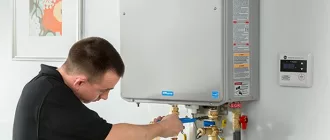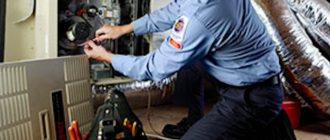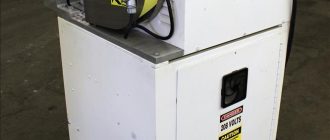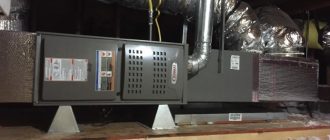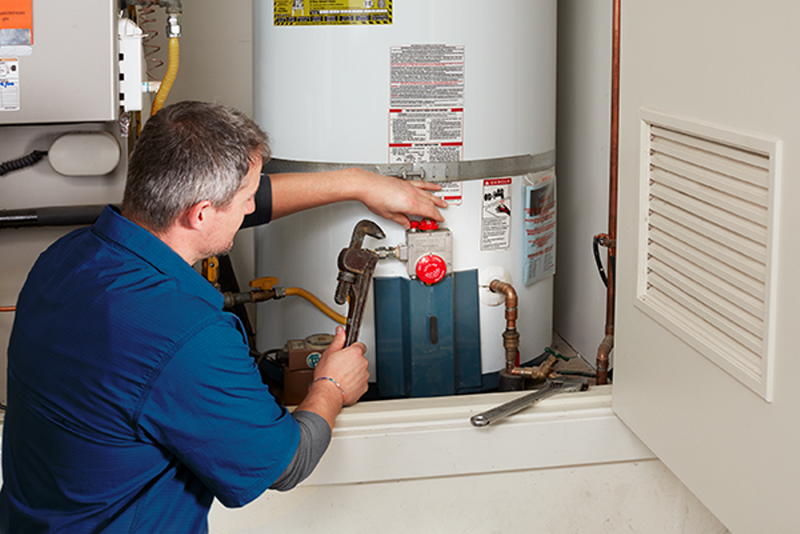
Essential Tankless Water Heater Maintenance Tips for Longevity
For homeowners who have invested in a tankless water heater, regular maintenance is essential for the longevity and optimal performance of the system. Neglecting proper maintenance can lead to decreased efficiency, higher energy bills, and even costly repairs. Here are a few crucial tankless water heater maintenance tips:
1. Flushing the system: One essential maintenance task is to flush out the tankless water heater regularly to remove any sediment or mineral buildup. This buildup can reduce the heater’s efficiency and cause damage to internal components.
2. Checking the pressure relief valve: It’s important to test the pressure relief valve periodically to ensure it’s functioning correctly. This valve releases excess pressure and prevents potential damage to the tankless water heater.
3. Inspecting the venting system: The venting system plays a crucial role in removing combustion gases safely. Regularly inspecting and cleaning the venting system is necessary to prevent blockages and ensure proper operation.
4. Cleaning the air intake filter: The air intake filter prevents debris from entering the tankless water heater. Cleaning or replacing the filter regularly can help maintain efficient airflow and prevent damage to the combustion system.
5. Testing the water flow: Check the water flow regularly to ensure there are no blockages or reduced pressure. Poor water flow can indicate a problem that needs to be addressed for optimal performance.
By following these important tankless water heater maintenance tips, homeowners can enjoy long-lasting performance and energy efficiency from their water heating system. Regular maintenance not only extends the lifespan of the heater but also ensures optimal performance and saves money in the long run.
Why Tankless Water Heaters Need Maintenance
Maintenance is essential for tankless water heaters to ensure their longevity and optimal performance. While these innovative appliances offer numerous benefits, such as energy efficiency and continuous hot water supply, they also require regular upkeep to function effectively.
One of the main reasons why tankless water heaters need maintenance is to prevent the buildup of mineral deposits. Hard water contains high levels of minerals, such as calcium and magnesium, which can accumulate on the heating elements of the unit over time. This buildup can reduce the efficiency of the heater and even lead to complete failure if not addressed.
Regular maintenance, including descaling, is necessary to remove these mineral deposits and improve the overall performance of the tankless water heater. Descaling involves using a descaling solution or vinegar to dissolve the mineral buildup and flush it out of the system. By doing this, you can ensure that your heater operates at its maximum efficiency and prolong its lifespan.
In addition to preventing mineral buildup, maintenance also includes checking for any potential leaks or issues with the water heater’s components. This involves inspecting the connections, valves, and fittings for any signs of wear or damage. Catching and fixing these issues early on can prevent further damage and potentially costly repairs down the line.
Regular maintenance also enables you to ensure that the water heater is running at the right temperature and pressure. Adjustments may be needed to optimize its performance and avoid any safety hazards. Additionally, it is important to check and clean the filters regularly to remove debris and ensure proper water flow through the system.
By investing time and effort into maintenance, you can ensure that your tankless water heater continues to provide efficient and reliable hot water for years to come. Whether it’s descaling, inspecting for leaks, or adjusting temperature settings, regular maintenance is essential for the longevity of your tankless water heater.
Importance of Tankless Water Heater Maintenance
Proper maintenance of your tankless water heater is essential for its longevity and optimal performance. By following a few simple tips, you can ensure that your tankless water heater continues to provide hot water efficiently for years to come.
Regular maintenance is crucial for keeping your tankless water heater in good condition. It is recommended to flush the system at least once a year to remove any mineral deposits or sediment buildup. This not only improves the heater’s efficiency but also prevents potential clogs and blockages.
Monitoring the water pressure is another important part of tankless water heater maintenance. High water pressure can put strain on the system, leading to potential leaks or damage. Installing a pressure regulator can help maintain the ideal water pressure and protect your water heater.
Checking the air intake and exhaust vents regularly is also necessary. These vents can become blocked by dust, debris, or even bird nests, which can impact the performance of your tankless water heater. Regularly cleaning and clearing these vents ensures proper airflow and prevents any issues.
Inspecting the water and gas connections is equally important. Any leaks or loose connections can not only affect the functionality of your heater but can also pose a safety hazard. Regularly checking and tightening these connections can help prevent any accidents or damage.
Lastly, scheduling a professional inspection and maintenance service for your tankless water heater is highly recommended. A professional technician can detect any potential issues, perform necessary repairs, and ensure that your heater is operating at its best.
Remember, regular maintenance is key to maximizing the lifespan and performance of your tankless water heater. By following these essential maintenance tips, you can enjoy a reliable and efficient hot water supply for years to come.
Benefits of Regular Maintenance
Regular maintenance of your tankless water heater is essential for ensuring its longevity and optimal performance. By following a few simple maintenance tips, you can maximize the lifespan of your heater and enjoy consistent hot water supply throughout the year.
| Improved Efficiency | Regular maintenance helps to improve the efficiency of your tankless water heater. Over time, mineral deposits can accumulate inside the heater, reducing its efficiency and causing it to work harder to heat water. By cleaning and descaling the heater regularly, you can remove these deposits and restore its efficiency. |
| Cost Savings | By maintaining your tankless water heater, you can help save on energy costs. An inefficient heater consumes more energy to heat water, resulting in higher utility bills. With regular maintenance, you can ensure that your heater operates at its peak efficiency, thus reducing your energy consumption and saving money in the long run. |
| Extended Lifespan | A properly maintained tankless water heater can have a longer lifespan compared to one that is neglected. Regular maintenance helps to prevent the buildup of sediment, rust, and other contaminants that can cause damage to the heater’s components. By keeping your heater clean and well-maintained, you can help it last for many years. |
| Consistent Performance | Maintaining your tankless water heater ensures consistent performance. When the heater is free from mineral deposits, it can heat water efficiently and provide a steady supply of hot water whenever you need it. Regular maintenance helps to prevent loss of performance and ensures that your heater functions optimally. |
Overall, regular maintenance of your tankless water heater is essential for its longevity, energy efficiency, cost savings, and consistent performance. By following these simple maintenance tips, you can enjoy the benefits of a well-maintained heater and have hot water whenever you need it.
Understanding Tankless Water Heater Components
A tankless water heater, also known as an on-demand water heater, is an essential appliance that provides hot water instantly without the need for a storage tank. To ensure its longevity and optimal performance, it is crucial to understand the various components that make up a tankless water heater.
1. Heat Exchanger:
The heat exchanger is the heart of a tankless water heater. It is responsible for heating the water as it passes through the unit. Tankless water heaters use either a gas burner or an electric element to heat the water. The heat exchanger transfers the heat from the burner or element to the water, ensuring a constant supply of hot water whenever needed.
2. Flow Sensor:
The flow sensor is a vital component that detects and measures the flow of water through the tankless water heater. It ensures that the heater operates only when there is a demand for hot water. The flow sensor activates the heating elements or burner when the water flow exceeds a certain threshold, and deactivates them when the flow stops. This feature helps to conserve energy and increase the longevity of the unit.
3. Control Panel:
The control panel is the user interface of the tankless water heater. It allows users to set the desired water temperature, activate different modes, and monitor the unit’s performance. Some advanced tankless water heaters even have Wi-Fi connectivity, enabling remote control and monitoring through a smartphone app.
4. Safety Features:
Tankless water heaters come equipped with various safety features to protect against overheating, excessive pressure, and other potential hazards. These features may include temperature sensors, pressure relief valves, and automatic shut-off mechanisms. Regular maintenance and timely inspections are essential to ensure these safety features are functioning correctly.
5. Venting System:
Gas-powered tankless water heaters require proper venting to expel combustion gases created during the heating process. Venting systems ensure the safe operation of the unit by directing these gases away from the living space to the outside. It is crucial to follow the manufacturer’s guidelines for vent installation and regular inspection to maintain optimal performance and prevent any potential health risks.
Understanding the various components of a tankless water heater is essential for its proper maintenance and longevity. Regular maintenance, such as flushing the unit and inspecting the components, can help keep your tankless water heater performing at its best for years to come.
Exploring the Heat Exchanger
The heat exchanger is an essential component of any tankless water heater. It is responsible for efficiently transferring heat to the water, ensuring optimal performance and longevity of the unit.
Understanding how the heat exchanger works can help you with the maintenance and troubleshooting of your tankless water heater. The heat exchanger consists of a series of metallic tubes or plates that are designed to maximize the contact between the hot combustion gases and the water. This efficient heat transfer process ensures that the water is heated quickly and efficiently.
Proper maintenance of the heat exchanger is crucial for the overall performance of your tankless water heater. Regular cleaning of the heat exchanger will prevent the accumulation of debris, scale, and sediment, which can affect its efficiency and performance. It is recommended to clean the heat exchanger annually or as per the manufacturer’s guidelines.
Here are some tips for maintaining the heat exchanger:
1. Inspect and clean the heat exchanger regularly: Remove any accumulated debris or sediment using a soft brush or compressed air. Ensure that the heat exchanger is free from any obstructions that may hinder the heat transfer process.
2. Check for signs of corrosion: Corrosion can weaken the heat exchanger and reduce its efficiency. Look for any signs of rust or corrosion on the surface of the heat exchanger. If you notice any, it may be necessary to replace the heat exchanger.
3. Flush the heat exchanger: Flushing the heat exchanger with a descaling solution can help remove any scale buildup. Follow the manufacturer’s instructions for the proper procedure and use of descaling agents.
4. Ensure proper ventilation: Adequate ventilation is essential for the proper functioning of the heat exchanger. Make sure that there is sufficient airflow around the unit to prevent overheating and ensure proper combustion of the fuel.
Following these essential maintenance tips for your tankless water heater’s heat exchanger will not only ensure its optimal performance but also prolong its lifespan. Regular inspection, cleaning, and maintenance will keep your tankless water heater running smoothly and efficiently, providing you with hot water whenever you need it.
Learning About the Burners
For a water heater to function efficiently and maintain its longevity, proper maintenance is essential. Along with regular maintenance, understanding the components of a water heater is crucial. One such important component is the burners.
Burners are responsible for heating the water in tankless water heaters. They are located underneath the water heater’s heat exchanger and are ignited by an electronic ignition system. The burners consist of a series of small flames, which heat the water as it passes through the heat exchanger.
To ensure optimal performance and longevity of your tankless water heater, it is important to keep the burners clean and free of any debris. Over time, dust, dirt, and other particles can accumulate on the burners, hindering their efficiency. Regular maintenance includes inspecting and cleaning the burners to remove any accumulated debris.
Here are some essential tips for maintaining the burners of your tankless water heater:
- Turn off the water heater and disconnect the power supply before performing any maintenance.
- Remove the access panel to gain access to the burners.
- Inspect the burners for any signs of damage or corrosion. If any issues are detected, contact a professional for repair.
- Use a soft brush or vacuum cleaner to gently remove any debris or dust from the burners.
- Ensure that the burners are free of any obstructions that may hinder their performance.
- Once the burners are clean, replace the access panel and restore power to the water heater.
By following these essential tips for burner maintenance, you can ensure the long-lasting performance of your tankless water heater. Remember, regular maintenance is key to maintaining the efficiency and longevity of your water heating system.
Tankless Water Heater Maintenance Checklist
Proper maintenance is essential for the longevity and optimal performance of your tankless water heater. Follow these tips to ensure that your water heater continues to provide you with hot water efficiently:
1. Regularly flush the system: Flushing the tankless water heater helps to remove mineral deposits that can accumulate over time. Follow the manufacturer’s instructions to safely flush the system and prevent issues with water flow and heat transfer.
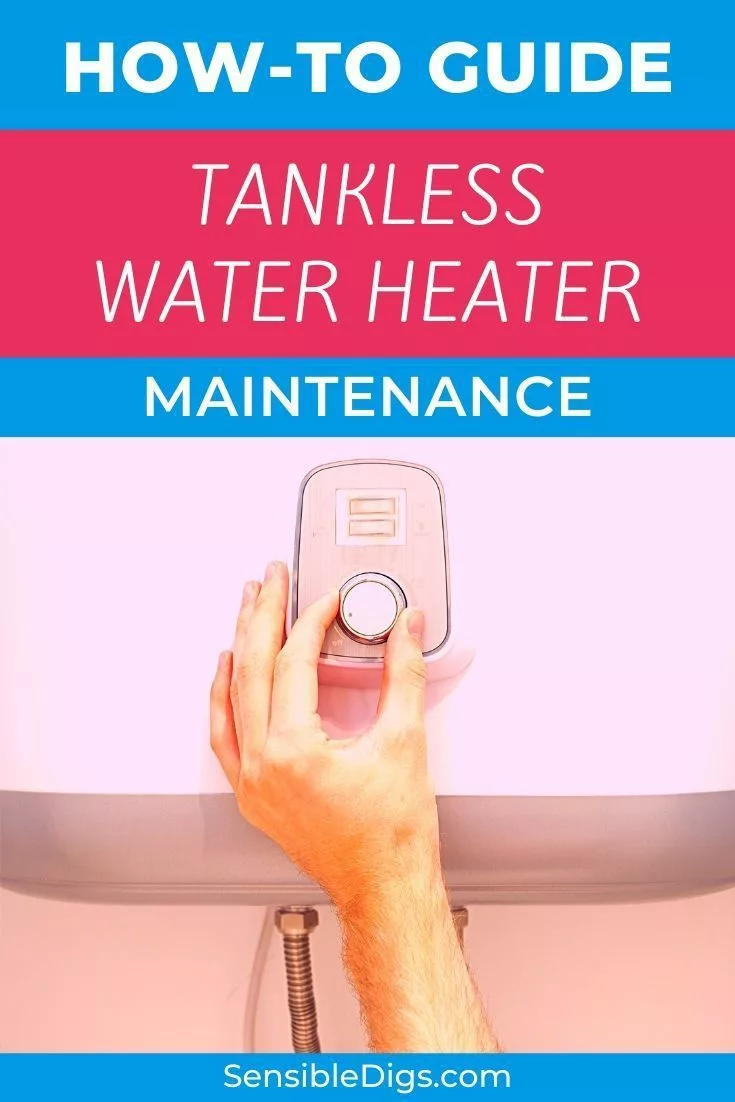
2. Check the pressure relief valve: The pressure relief valve is a safety feature that releases excess pressure from the tank. Regularly inspect the valve to ensure that it is functioning correctly and replace it if necessary.
3. Clean or replace the air filter: The air filter prevents dust and debris from entering the system. Clean or replace the filter regularly to maintain efficient operation and prevent damage to the components.
4. Inspect the venting system: The venting system is responsible for removing exhaust gases from the tankless water heater. Inspect the vents for blockages or damage and clear any obstructions to ensure proper ventilation.
5. Test the water temperature: Check the water temperature regularly to ensure that it is reaching the desired level. Adjust the temperature settings if needed, but be cautious not to exceed the recommended maximum temperature to avoid scalding.
6. Schedule professional maintenance: While regular DIY maintenance is important, it is also advisable to schedule a professional maintenance service for your tankless water heater. A trained technician can thoroughly inspect and service the unit to identify any potential issues before they become major problems.
Remember: Following these maintenance tips will not only prolong the life of your tankless water heater but also ensure its safe and efficient operation. Don’t neglect the essential maintenance tasks and enjoy the benefits of your tankless water heater for years to come!
Flushing the System
Flushing the system is an essential step for ensuring the longevity and optimal performance of your tankless water heater. Over time, mineral deposits and sediments can build up inside the unit, resulting in reduced efficiency and potential damage to the heating elements and other components.
To flush the system, follow these tips:
- Turn off the power: Before starting the flushing process, make sure to turn off the power supply to the water heater. This will prevent any accidents or electrical shocks.
- Shut off the water supply: Locate the main water supply valve and shut it off. This will stop the flow of water into the unit and allow you to safely flush out the system.
- Drain the water heater: Attach a hose to the drain valve of the water heater and place the other end in a suitable drain or outside area. Open the drain valve and allow the water to flow out until it runs clear. This will flush out any accumulated sediments and debris.
- Remove and clean the filter: Many tankless water heaters have a filter that needs to be periodically cleaned. Remove the filter and rinse it under running water to remove any debris or mineral deposits.
- Reassemble the system: Once the flushing process is complete, close the drain valve and reattach the hose. Turn on the main water supply valve and let the water flow through the system for a few minutes to flush out any remaining debris.
- Restore power: Finally, turn on the power supply to the water heater and ensure that it is functioning correctly. Monitor the system for any leaks or unusual noises, and if any issues arise, consult a professional for further assistance.
Flushing the system on a regular basis, as recommended by the manufacturer, is crucial for maintaining the efficiency and longevity of your tankless water heater. Following these tips will help keep your unit running smoothly and ensure a constant supply of hot water for your needs.
Note: It is advised to refer to the manufacturer’s instructions specific to your tankless water heater model for detailed flushing guidelines.
Checking for Leakage
One of the key maintenance tips for ensuring the longevity of your tankless water heater is regularly checking for any signs of leakage. Water leakage can not only lead to wasted water but can also cause damage to your property if left unchecked.
To effectively check for leakage, follow these simple steps:
| 1. | Turn off the power supply to the heater. |
| 2. | Inspect the area around the water heater for any visible signs of water, such as puddles or wet spots. |
| 3. | Check the connections and fittings on the water heater for any signs of leakage, such as dripping or moisture. |
| 4. | Inspect the pipes connected to the water heater for any cracks or wear and tear. |
| 5. | Use a flashlight to check the bottom of the heater for any water accumulation. |
| 6. | If you notice any leakage, it is important to address it immediately. Depending on the severity of the leakage, you may need to tighten the connections, replace faulty fittings or call a professional plumber for assistance. |
By regularly checking for leakage and promptly addressing any issues, you can ensure the optimal performance and longevity of your tankless water heater, saving both water and money in the long run.
Inspecting Venting System
Ensuring the proper functioning of the venting system is essential for the longevity of your tankless water heater. Here are some important tips to inspect the venting system:
1. Clear any obstructions: Make sure that there are no obstructions, such as debris or bird nests, blocking the venting system. Any blockage can disrupt the airflow and affect the performance of your tankless water heater.
2. Check for leaks: Inspect the venting system for any signs of leaks. Leaks can lead to energy loss and inefficiency in your tankless water heater.
3. Look for corrosion: Check for corrosion or rusting on the venting system. Corrosion can weaken the structure and lead to potential hazards. If you notice any signs of corrosion, it is important to address them promptly.
4. Examine the joints: Inspect the joints of the venting system for any signs of damage or loose connections. Make sure that all joints are properly sealed to prevent any leaks or gas leakage.
5. Clear the intake air: Ensure that the intake air for the venting system is clear from any debris or blockages. A clear intake air is essential for the proper combustion and operation of your tankless water heater.
By regularly inspecting the venting system of your tankless water heater, you can ensure its optimal performance and longevity. Follow these essential tips to keep your tankless water heater running smoothly for years to come.
Cleaning the Air Filter
Regularly cleaning the air filter of your tankless water heater is an essential maintenance task that contributes to the longevity and optimal performance of your unit. The air filter plays a crucial role in keeping the heater running smoothly and efficiently.
Here are some important tips for cleaning the air filter:
- Make sure to turn off the water heater and disconnect the power supply before starting the cleaning process.
- Locate the air filter compartment on your tankless water heater. It is usually located on the front or side of the unit.
- Carefully remove the air filter from its housing. Take note of its position before removing to ensure proper reinstallation.
- Inspect the air filter for any dirt, dust, or debris. If it appears dirty or clogged, it is time to clean it.
- Use a soft brush or vacuum cleaner to gently remove any dirt or dust from the air filter. Be thorough and ensure that all debris is removed.
- If the air filter is heavily soiled, you may need to wash it with warm water and mild detergent. Rinse it thoroughly and allow it to dry completely before reinstalling.
- Once the air filter is clean and dry, carefully place it back into its housing. Make sure it is securely in place.
- Turn on the water heater and reconnect the power supply.
- Regularly check and clean the air filter at least once every three months or as recommended by the manufacturer.
Following these cleaning tips for the air filter will help to ensure that your tankless water heater operates efficiently and maintains its longevity. The cleaner the air filter, the better the heater will perform, providing you with a continuous supply of hot water whenever you need it.
Testing Pressure Relief Valves
When it comes to tankless water heater maintenance, testing the pressure relief valve is an essential step for ensuring the longevity and proper functioning of your unit. The pressure relief valve is designed to release excess pressure from the water heater system, preventing any potential damage or explosions.
To test the pressure relief valve, follow these steps:
Step 1: Turn off the power supply to the water heater unit and ensure that it has cooled down completely.
Step 2: Locate the pressure relief valve, which is usually located at the top or side of the unit. It is typically a small valve with a lever or a small handle.
Step 3: Place a bucket or a container underneath the valve to catch any water that may be released during the testing process.
Step 4: Carefully lift the lever or handle on the pressure relief valve. You should hear a slight release of air or see some water being expelled into the bucket.
Step 5: Once you have released the pressure, carefully lower the lever or handle back into its original position.
It is important to note that if the pressure relief valve does not release any air or water, it may be malfunctioning and should be replaced immediately. A faulty pressure relief valve can lead to increased pressure within the tankless water heater system, which can result in damage to the unit and potential safety hazards.
Regularly testing the pressure relief valve is an essential part of tankless water heater maintenance, as it ensures the safe and efficient operation of your unit. By following these simple steps, you can help prolong the longevity of your tankless water heater and enjoy uninterrupted access to hot water.
undefined
How often should I perform maintenance on my tankless water heater?
It is recommended to perform maintenance on your tankless water heater at least once a year to ensure optimal performance and longevity.
What are some signs that my tankless water heater may need maintenance?
Some signs that your tankless water heater may need maintenance include decreased hot water flow, fluctuating water temperatures, and strange noises coming from the unit.
Can I perform maintenance on my tankless water heater myself?
While some maintenance tasks can be done by homeowners, it is recommended to have a professional perform maintenance on your tankless water heater to ensure proper care and to avoid any potential damage or voiding of warranties.
What are some common maintenance tasks for tankless water heaters?
Some common maintenance tasks for tankless water heaters include descaling the unit, cleaning the filter, checking for leaks, and ensuring proper ventilation.
Why is maintenance important for a tankless water heater?
Maintenance is important for a tankless water heater to ensure its long-lasting performance. Regular maintenance helps prevent issues such as mineral buildup, decrease in efficiency, and potential breakdowns, resulting in a longer lifespan for the unit.

